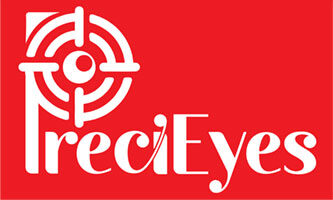Professional advice
Our Location
Quick Contact
Opening Hours
10:00 Am- 08:00 PM
Book Appointment
Checklist indicating visual perceptual processing issues in Children
Visual perception is the ability of our brain to interpret what is seen around us. The simple act of seeing and reading the last line of the visual acuity chart does not mean that the person has good visual perceptual skills. A child may simply identify an object at a distance but if the child shows difficulties in registering the object, recalling it or appreciating its differences and similarities amongst other objects then the child is experiencing visual perceptual issues. These problems could negatively impact the child’s performance in academics, sports and even socializing. As the child constantly finds difficulty in reading, writing, completing math problems, completing activities of daily living like eating, toileting etc, then the child loses his/her self esteem which may also lead to irritability and frustration in the child.
Early detection and timely intervention can help the child to perform like his peers. Down below is a checklist that would help you to recognize if your child is facing any visual perceptual problems. This has been compiled from various checklists for quick recognition of your child’s abilities and difficulties.
Signs of Visual Perceptual Problems
Is your child facing any of the following difficulties?
| Description | Yes/No |
|---|---|
| Often complaints of headache or eyestrain while reading | |
| Shows poor attention while reading | |
| Lose their place while reading | |
| Often skips, omits or re-read words | |
| Often avoids reading or any near work | |
| Complaints of blurred vision at the end of the day | |
| Cover or close one eye while reading | |
| Misspells words frequently | |
| Gets distracted very easily | |
| Finds difficulty in comprehending what is read | |
| Tire easily or falls asleep while reading | |
| Become fidgety and restless while reading | |
| Use finger or marker to keep track while reading | |
| Squint, rub or show watery eyes while reading or writing | |
| Has difficulty differentiating between p/q, b/d, u/n | |
| Inverses letter or numbers while copying (23 for 32, 19 for 91) | |
| Write uphill or downhill | |
| Misaligns digits while writing | |
| Can answer orally but finds difficulty during written examination | |
| Child appear brighter than what test scores indicate | |
| Confuses left/right directions | |
| Have poor posture while reading or writing | |
| Exhibits poor eye-hand coordination during writing/artwork | |
| Complaints of not able to see the board, double vision, lines moving or appearing wavy | |
| Exhibit poor spacing between letters and words while writing | |
| Inconsistent/poor in sports activities | |
| Avoiding sports and games | |
| Difficulty completing homework on time | |
| Saying I can’t before trying | |
| Difficulty managing time | |
| Has difficulty tying shoe lace, buttoning the shirt or zip trousers | |
| Inability to judge distances | |
| Difficulty with money concepts | |
| Misplaces objects, belongings | |
| Car sickness / motion sickness | |
| Forgetful/poor memory | |
| Difficulty with peer interaction | |
| Needs auditory cues/clues |
If your child is facing any of the above challenges, it’s indeed necessary to get your child evaluated by a developmental optometrist. At PreciEyes we perform a comprehensive eye examination that includes assessment of functional vision of your child. Our therapy programs help to alleviate your child’s symptoms.
For more details call 9884757760 / mail to care@precieyes.com
